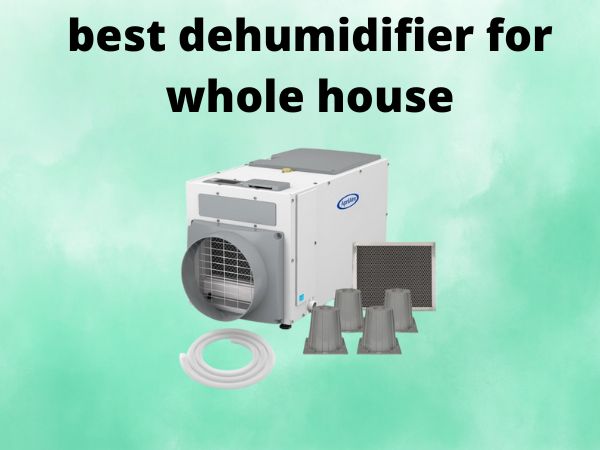How Effective Are Dehumidifiers for Humidity Control?
Table of Contents
Maintaining Optimal Humidity Levels in Your Home
As a homeowner, you know the importance of controlling humidity levels in your living space. Too much moisture in the air can lead to a host of problems, from musty odors and mold growth to respiratory issues and damage to your belongings. That’s where a dehumidifier comes in – a powerful ally in the quest for comfortable, healthy indoor air.
Understanding the Role of Dehumidifiers
Dehumidifiers are designed to extract excess moisture from the air, effectively lowering the relative humidity in a room or entire home. But just how effective are these appliances, and what factors determine their performance? In this comprehensive guide, we’ll dive into the world of dehumidifiers, exploring their capabilities, key features, and the various ways they can help you achieve the perfect balance of humidity in your living space.
How Dehumidifiers Work: The Science Behind Humidity Control
At their core, dehumidifiers use a simple scientific principle to remove moisture from the air. They work by drawing in warm, humid air and passing it over a cold coil. As the air cools, the water vapor condenses and is collected in a tank or drained away, leaving the air drier and more comfortable.
The Importance of Dehumidifier Capacity
One of the most critical factors in determining a dehumidifier’s effectiveness is its capacity, which is typically measured in pints of water removed per day. The right capacity for your needs depends on the size of the space you’re trying to dehumidify, as well as the starting humidity level.
As a general rule, you’ll want a dehumidifier that can remove at least 30 pints of water per day for a medium-sized room or home. For larger spaces or areas with particularly high humidity, you may need a unit with a capacity of 50 pints or more. Choosing the right size is essential to ensure your dehumidifier can keep up with the moisture in your home and maintain a comfortable, healthy environment.
Energy Efficiency and Noise Levels
In addition to capacity, two other important considerations when selecting a dehumidifier are energy efficiency and noise levels. Look for models that are ENERGY STAR certified, as these will use less electricity and be more cost-effective to operate over time. You’ll also want to pay attention to the decibel rating, as some dehumidifiers can be quite noisy, which can be disruptive in living spaces.
Factors That Affect Dehumidifier Effectiveness
While dehumidifiers are generally highly effective at controlling humidity, there are several variables that can influence their performance. Understanding these factors can help you get the most out of your dehumidifier and ensure it’s working as efficiently as possible.
Room Size and Layout
As mentioned earlier, the size of the space you’re trying to dehumidify is crucial. A unit that’s too small for the room won’t be able to keep up with the moisture, while a larger-than-necessary dehumidifier may waste energy and resources. Be sure to measure the square footage of the area you want to control and select a dehumidifier accordingly.
Temperature and Humidity Levels
Dehumidifiers work best in warmer environments, as the temperature affects their ability to condense moisture. If the room is too cool, the dehumidifier may struggle to remove enough water from the air. Conversely, in very hot and humid conditions, the dehumidifier may need to work overtime to maintain your desired humidity level.
Air Circulation and Ventilation
Proper air circulation is also essential for effective dehumidification. Make sure the dehumidifier is positioned in a spot with good airflow, and consider using fans to help distribute the drier air throughout the room or home. Adequate ventilation is also important, as it can prevent the dehumidifier from simply recirculating the same moist air.
Maximizing Dehumidifier Efficiency
To get the most out of your dehumidifier and ensure it’s working as effectively as possible, there are a few key tips to keep in mind:
- Regularly clean and maintain the unit – This includes emptying the water tank, cleaning the filters, and removing any buildup of dust or debris.
- Seal any air leaks – Cracks, gaps, and other openings can allow moist outdoor air to infiltrate your home, undermining the dehumidifier’s efforts.
- Insulate your home – Proper insulation can help regulate temperature and humidity levels, making it easier for the dehumidifier to do its job.
- Consider additional humidity control measures – Supplementing your dehumidifier with other strategies, like using a hygrometer to monitor humidity levels, can further enhance its effectiveness.
Conclusion
Dehumidifiers are powerful tools for maintaining optimal humidity levels in your home, but their effectiveness depends on a variety of factors. By understanding the science behind how they work, choosing the right size and features, and implementing complementary humidity control strategies, you can create a comfortable, healthy living environment that’s free from the problems associated with excess moisture.
FAQ
How long does it take a dehumidifier to lower humidity?
The time it takes for a dehumidifier to lower humidity levels can vary depending on factors like the size of the space, the starting humidity level, and the dehumidifier’s capacity. On average, most dehumidifiers can reduce humidity by 10-20% within the first few hours of operation, with further reductions over the next 24-48 hours.
Can a dehumidifier make a room colder?
Yes, dehumidifiers can have a slight cooling effect on a room. As the dehumidifier removes moisture from the air, it also lowers the air temperature. This is because the process of condensation releases heat, which is then expelled from the unit. However, the cooling effect is typically modest and not enough to replace a dedicated air conditioning system.
Do dehumidifiers use a lot of electricity?
The energy consumption of a dehumidifier can vary depending on the model and its size. Larger, high-capacity dehumidifiers tend to use more electricity than smaller units. However, many modern dehumidifiers are designed to be energy-efficient, with ENERGY STAR-certified models using 15% less energy than standard models. Proper sizing and usage can also help minimize the electricity usage of a dehumidifier.
How do I know if my dehumidifier is working properly?
There are a few signs that your dehumidifier is functioning effectively. First, you should notice a decrease in humidity levels within the space, as measured by a hygrometer. The dehumidifier’s water collection tank should also be filling up regularly, indicating that it’s removing moisture from the air. Additionally, the unit should be running smoothly without any unusual noises or malfunctions.
Can a dehumidifier help with mold and mildew?
Yes, dehumidifiers can be highly effective in preventing and controlling mold and mildew growth. By maintaining optimal humidity levels, typically between 30-50%, dehumidifiers create an environment that is inhospitable to these types of fungi. This can help eliminate existing mold and mildew problems and prevent them from recurring in the future.

